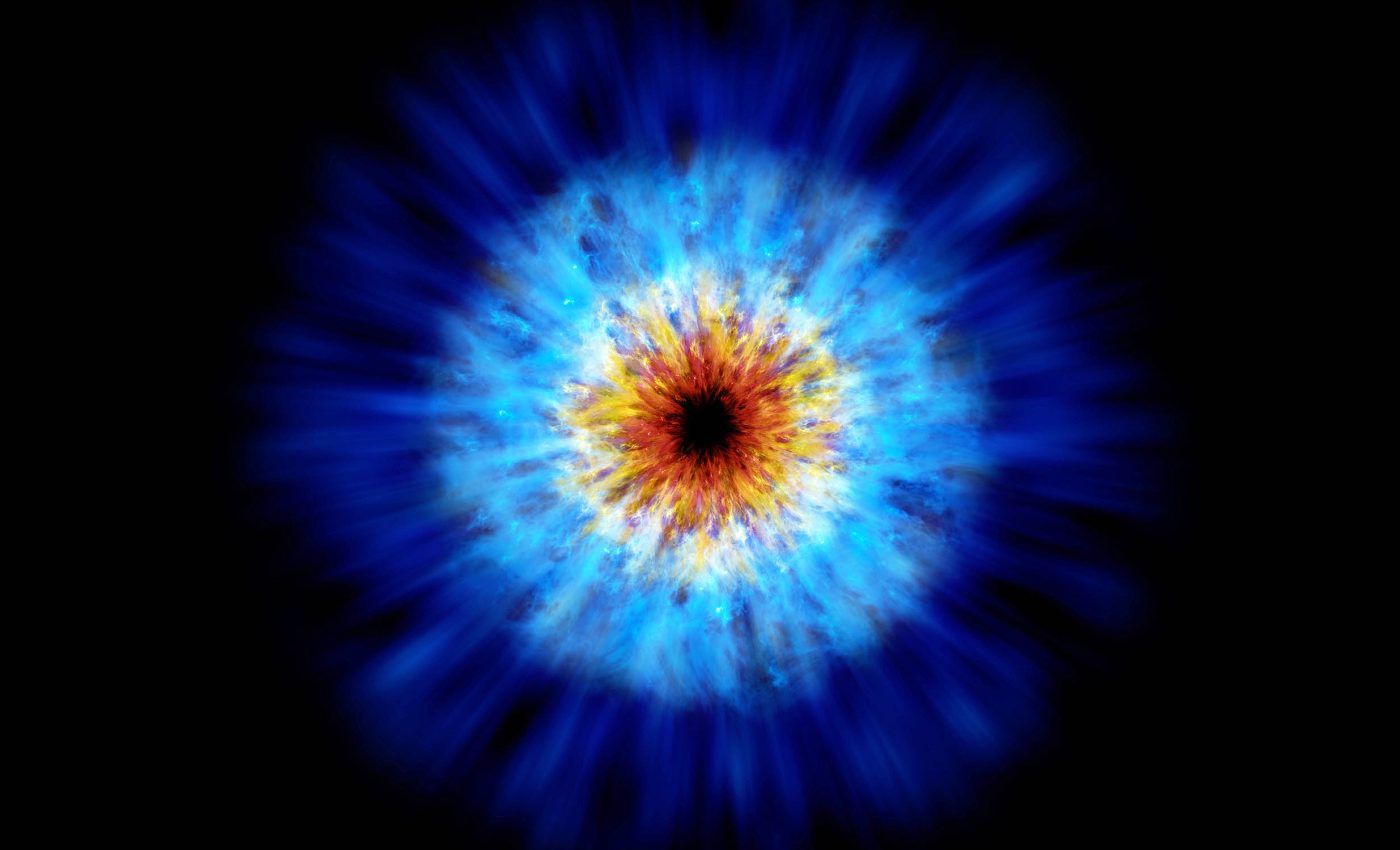
New theory called "Dark Big Bang" attempts to explain dark matter
Dark matter has always been one of the biggest mysteries in astrophysics. While we can’t see it directly, most scientists are certain it’s out there because of its gravitational pull on galaxies. The “Dark Big Bang” theory may have the answer.
What if dark matter came from its own separate Big Bang, a kind of cosmic encore that happened after the original Big Bang we all know about?
While we can’t see it directly, most scientists are certain it’s out there. But where did it come from?
Assistant Professor Cosmin Ilie and student researcher Richard Casey are shedding new light on this cosmic enigma.
They’ve been exploring an intriguing idea that might change how we understand the origins of dark matter.
Dark Big Bang Theory
Their work at Colgate University builds on a concept proposed by scientists Katherine Freese and Martin Winkler from the University of Texas at Austin.
In 2023, Freese and Winkler suggested that dark matter might have its own origin story — a separate event they’re calling the “Dark Big Bang.”
This event could have occurred shortly after the conventional Big Bang, adding a new chapter to the universe’s early history.
Typically, we think of the Big Bang as the singular event that created all matter, including dark matter. But this new theory proposes that dark matter was born from a distinct process.
It involves a quantum field that only interacts with the dark sector and starts out trapped in a false vacuum state.
When it decays, it could produce dark matter particles in a burst of energy akin to a second Big Bang.
Understanding dark matter
When we look at how galaxies rotate or how light bends around massive objects (a phenomenon called gravitational lensing), we notice things don’t add up unless there’s some invisible mass exerting extra gravity.
Scientists have been scratching their heads over what dark matter actually is. It’s not made of the same particles that make up stars, planets, and us.
It doesn’t interact with electromagnetic forces, which is why it doesn’t glow, reflect, or block light.
Think of it as an invisible framework that holds galaxies together. Without dark matter, galaxies would probably fly apart because there’s not enough visible mass to keep them intact.
So, while we can’t see dark matter directly, its gravitational fingerprints are all over the cosmos.
What exactly is the Big Bang?
This theory suggests that everything we see today — from the tiniest particles to the largest galaxies — began from an unimaginably hot and dense state about 13.8 billion years ago.
At that moment, the universe didn’t explode into space; rather, space itself began expanding. All matter, energy, space, and even time came into existence and started stretching outwards.
Think of it like this: the universe was once compressed into a point smaller than an atom, and then it started expanding and cooling.
This expansion allowed particles to form atoms, which eventually led to the creation of stars and galaxies.
We see evidence of this event in the cosmic microwave background radiation, which is like a faint afterglow left over from the Big Bang.
Dark matter and the Big Bang
Ilie and Casey took this concept and ran with it. In their recent study, they examined all the ways this Dark Big Bang could fit within what we already know from experiments and observations.
Most excitingly, they uncovered a range of scenarios that hadn’t been considered before, opening up new possibilities for how dark matter came to be.
“Detecting gravitational waves generated by the Dark Big Bang could provide crucial evidence for this new theory of dark matter,” said Ilie.
He believes that upcoming experiments could give us the tools we need to test this idea like never before.
Gravitational waves and the Dark Big Bang
Gravitational waves are ripples in the fabric of space-time, caused by massive events like merging black holes or neutron stars.
The 2023 detection of background gravitational waves by the NANOGrav collaboration might be linked to this Dark Big Bang. If that’s the case, we could be on the verge of a major breakthrough.
“With current experiments like the International Pulsar Timing Array (IPTA) and the Square Kilometer Array (SKA) on the horizon, we may soon have the tools to test this model in unprecedented ways,” Ilie added.
These experiments could detect the specific gravitational wave signals predicted by the Dark Big Bang theory, providing crucial evidence to support or refute it.
What does all of this mean?
If the Dark Big Bang theory holds water, it could revolutionize our understanding of the universe.
Not only would it explain the origin of dark matter, but it could also give us new insights into the early moments after the Big Bang.
This theory highlights the importance of gravitational waves in studying the cosmos. As we get better at detecting these waves, we might uncover more secrets hidden in the universe’s earliest moments.
By refining our understanding of these parameters, we might even uncover new physics that goes beyond our current theories.
The work by Ilie and Casey is a significant step in solving one of the biggest puzzles in physics.
As future experiments provide more precise measurements, their findings could help confirm whether the Dark Big Bang is the true origin of dark matter.
The full study was published in the journal Physical Review D.
—–
Like what you read? Subscribe to our newsletter for engaging articles, exclusive content, and the latest updates.
Check us out on EarthSnap, a free app brought to you by Eric Ralls and Earth.com.
—–













